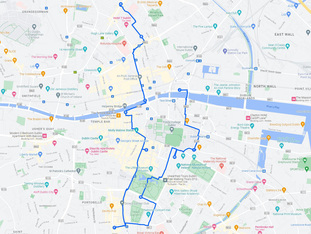Released in 1922, James Joyce is said to have stated the following about his novel Ulysses: ‘I want to create an image of Dublin so complete that if the city suddenly disappears from the ground, it could be rebuilt from my book in its entirety.’ And he succeeded. For a whole day on 16 June 1904, his protagonist Leopold Bloom walks through the streets of the Irish capital, and you can follow his path even today because 14 signs mark the most important points. There’s Sweny’s Pharmacy, for example, which still exists today: this is where Bloom buys lemon soap, the fragrance of which accompanies him throughout the day. In the Davy Byrnes pub, he enjoys a Gorgonzola sandwich with mustard and a glass of Burgundy. You can still enjoy the famous sandwich there today. When Bloom meets his wife’s lover after dinner, he escapes to the National Library of Ireland.
The impressive reading rooms are particularly popular on 16 June – the day known as Bloomsday that’s celebrated in the city every year. People all over Dublin wear costumes inspired by 1920s fashion: ankle-length dresses and straw hats for the women, black suits and top hats for the men. Some of them put on round glasses, just like James Joyce wore. But what makes the novel one of the hundred most important works of the 20th century? On the one hand, it was a literary sensation because it consistently implemented the stylistic device of the internal monologue, something completely new. On the other hand, Joyce creates an intense picture of his city, so vivid and colourful that it really feels like you’re travelling back in time to Dublin over 100 years ago – either between the covers of the book or on a varied walk in the footsteps of Leopold Bloom through the Dublin of today!
Read more
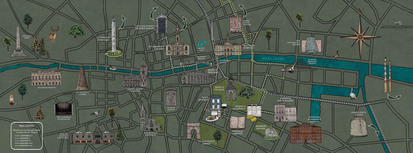
Always following Google’s nose
Leopold Bloom’s walk in Ulysses starts at eight o’clock in the morning and ends at three o’clock in the morning – after 13 kilometres on foot and 16 kilometres on public transport. We’ll make it a little easier for you.
This 90-minute walk takes you right through the city centre past 10 of the main stops that Leopold Bloom makes in the novel – and also passes directly by our Motel One.
But whether you’re a fan of Ulysses or not, the route, which you can also discover in illustrated form on the back wall of our hotel lounge, conveys a beautiful yet compact impression of the city.
Let’s go:
Read more
10 stations to follow James Joyce
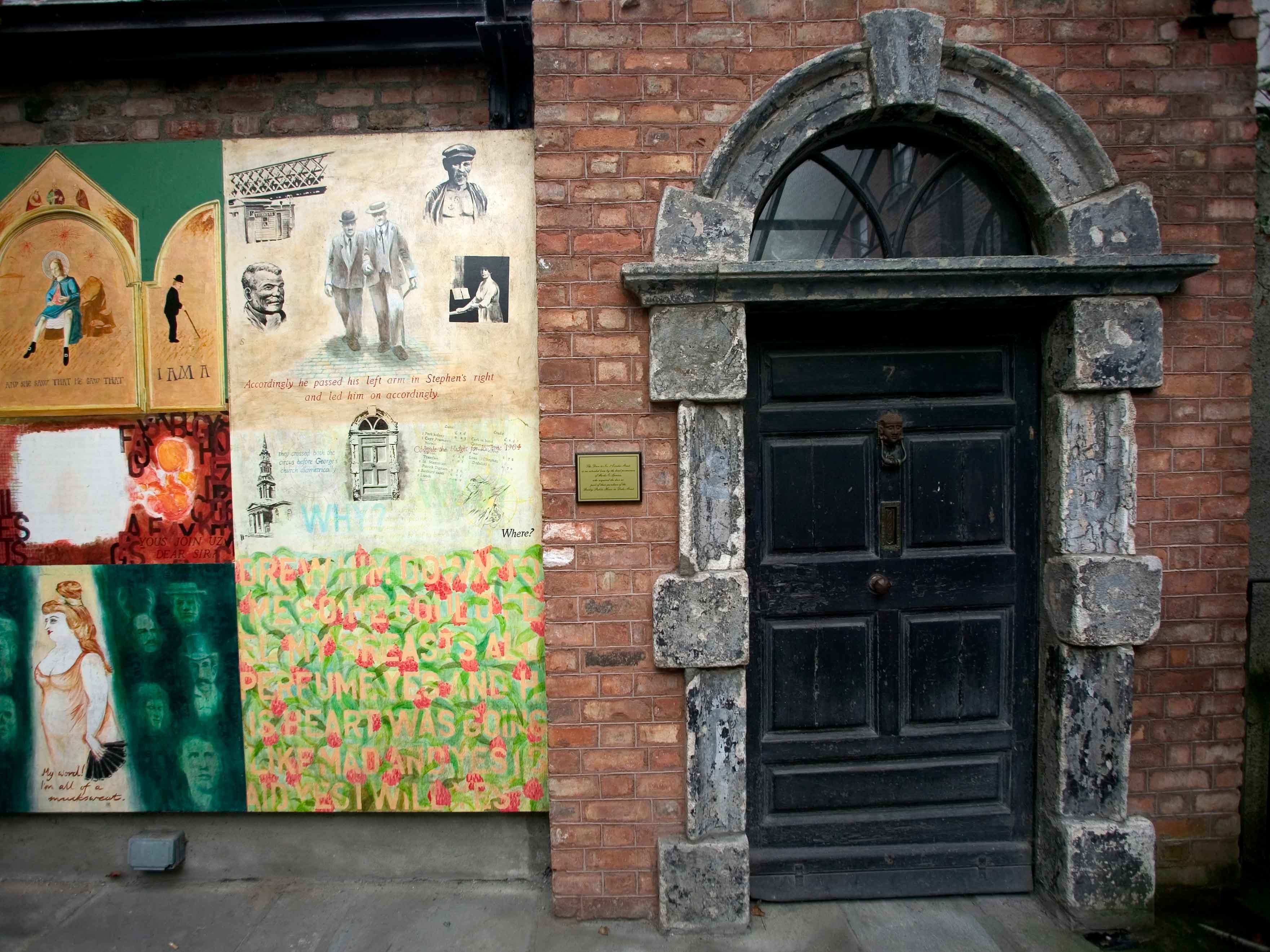
The residence of Leopold Bloom was located at Eccles Street No. 7 in the North of Dublin. Unfortunately, the house was demolished in 1967, but the front door and surrounding brickwork were saved and have been in the James Joyce Centre since 1995.
In addition to the distinctive front door, the James Joyce Centre offers a wide range of display boards, photos and videos providing an insight into the life of James Joyce and his work, particularly Ulysses. The museum extends over three floors and is entirely dedicated to the life and works of the author. For true fans, a visit here is simply not to be missed.
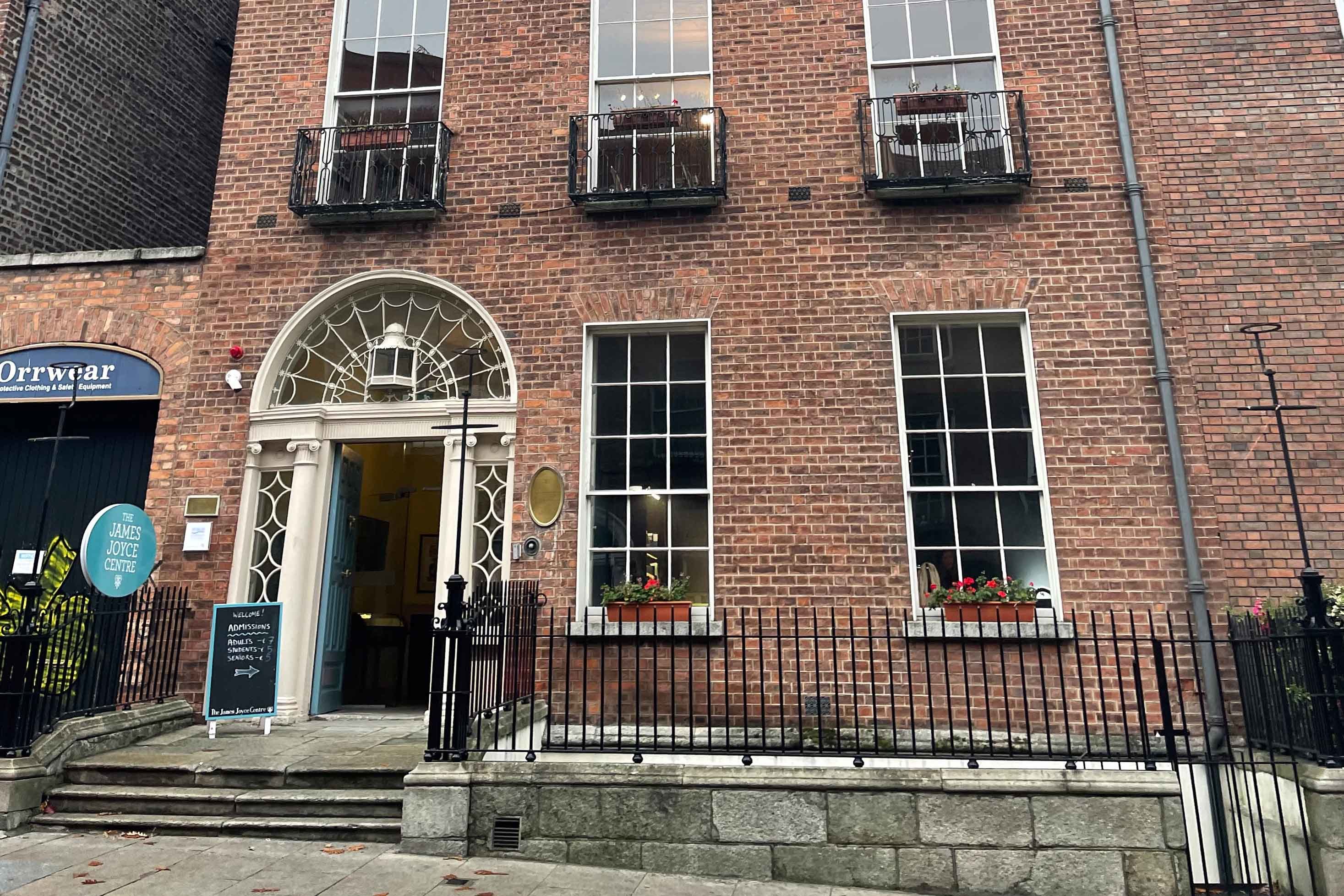
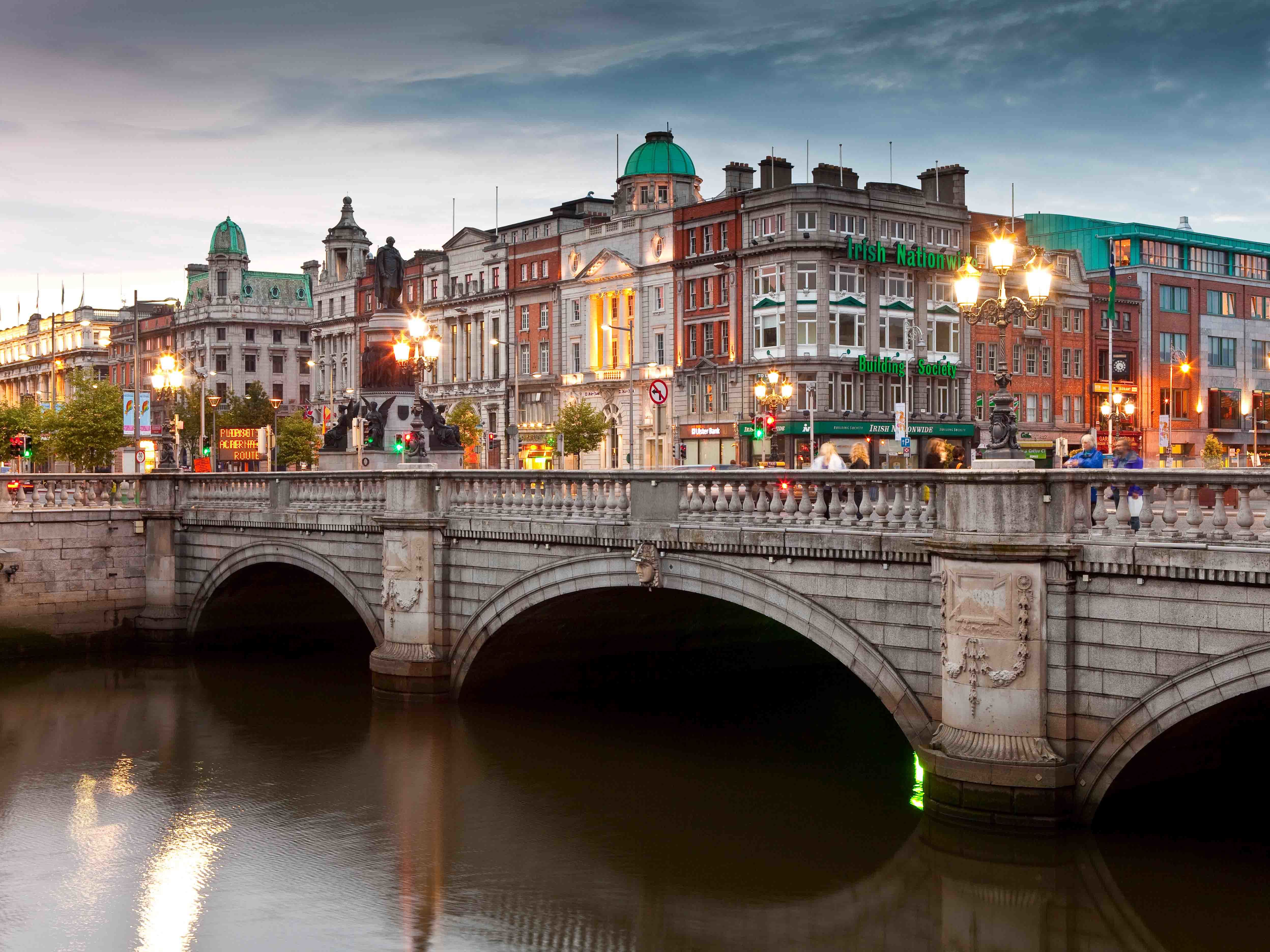
The O’Connell Bridge is one of the most central bridges in Dublin, crossing the River Liffey and connecting the north and south sides of the city. In chapter four of Ulysses, Leopold Bloom crosses the O’Connell Bridge on his morning walk through the city. He stops to feed some gulls and watch the river and the crowd on the bridge.
Merchant’s Arch is a historic passageway in Dublin. It connects the lively Temple Bar neighbourhood with the Ha’penny Bridge. In Ulysses, Leopold Bloom buys a saucy novel from a vendor at Merchant’s Arch. This erotic book is a gift for his wife Molly and the scene highlights Bloom’s efforts to revive the intimacy of their relationship.
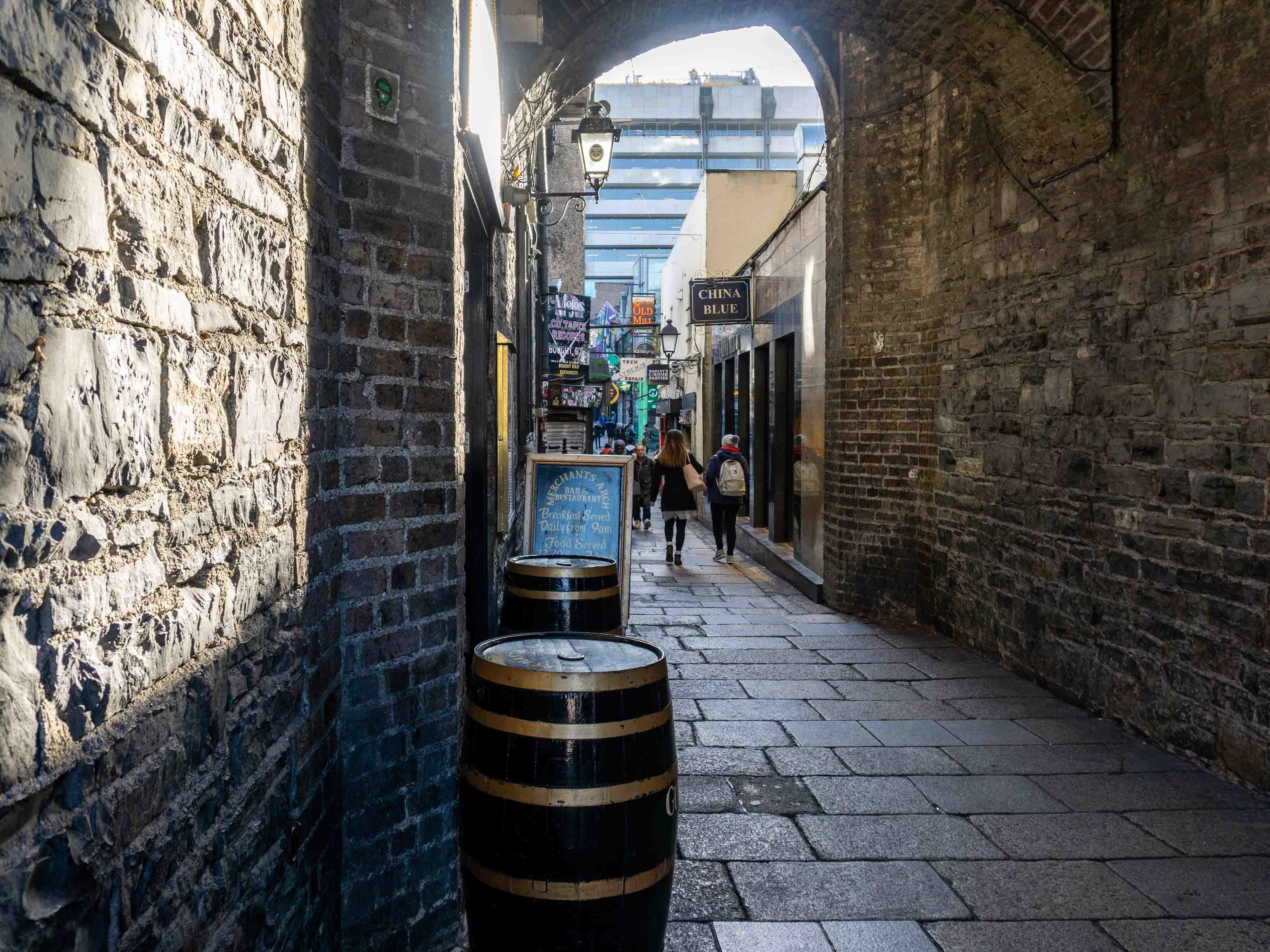
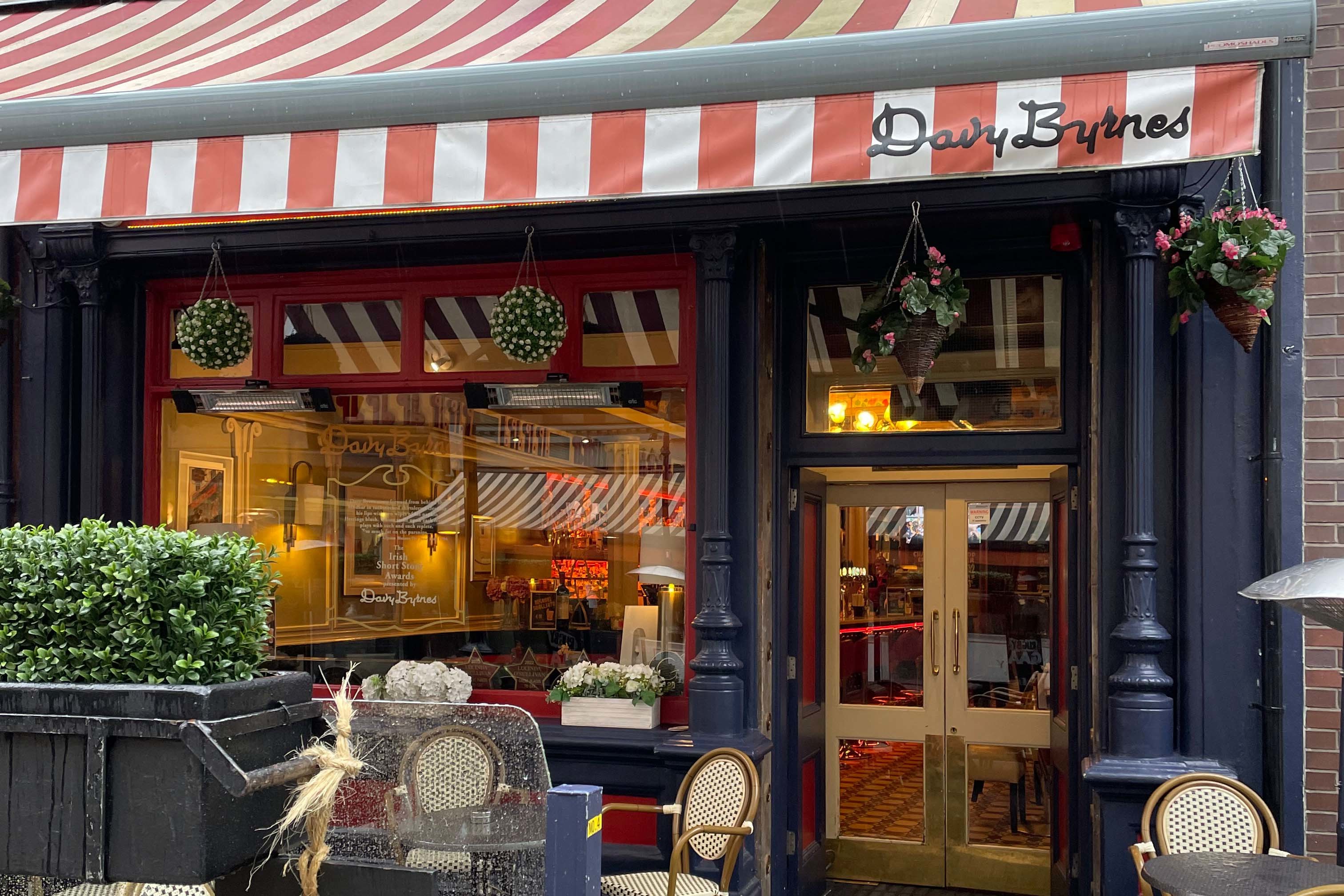
The Davy Byrnes pub is a well-known and historic pub on Duke Street in Dublin, renowned for its relaxed atmosphere and its selection of sandwiches and drinks. In Ulysses, the Davy Byrnes pub becomes an important setting. This is where Leopold Bloom stops off and orders himself a glass of Burgundy and a Gorgonzola sandwich, which is still on the menu today. The pub has become a go-to for literature and Ulysses fans, and a place to track part of Bloom’s journey through Dublin.
Another well-known inn featured in the novel is The Bleeding Horse, which occupies an idyllic location on Camden Street. Not only did Leopold Bloom fortify himself in the 17th-century coach house, James Joyce and his close friends were also among the regular visitors of this pub.
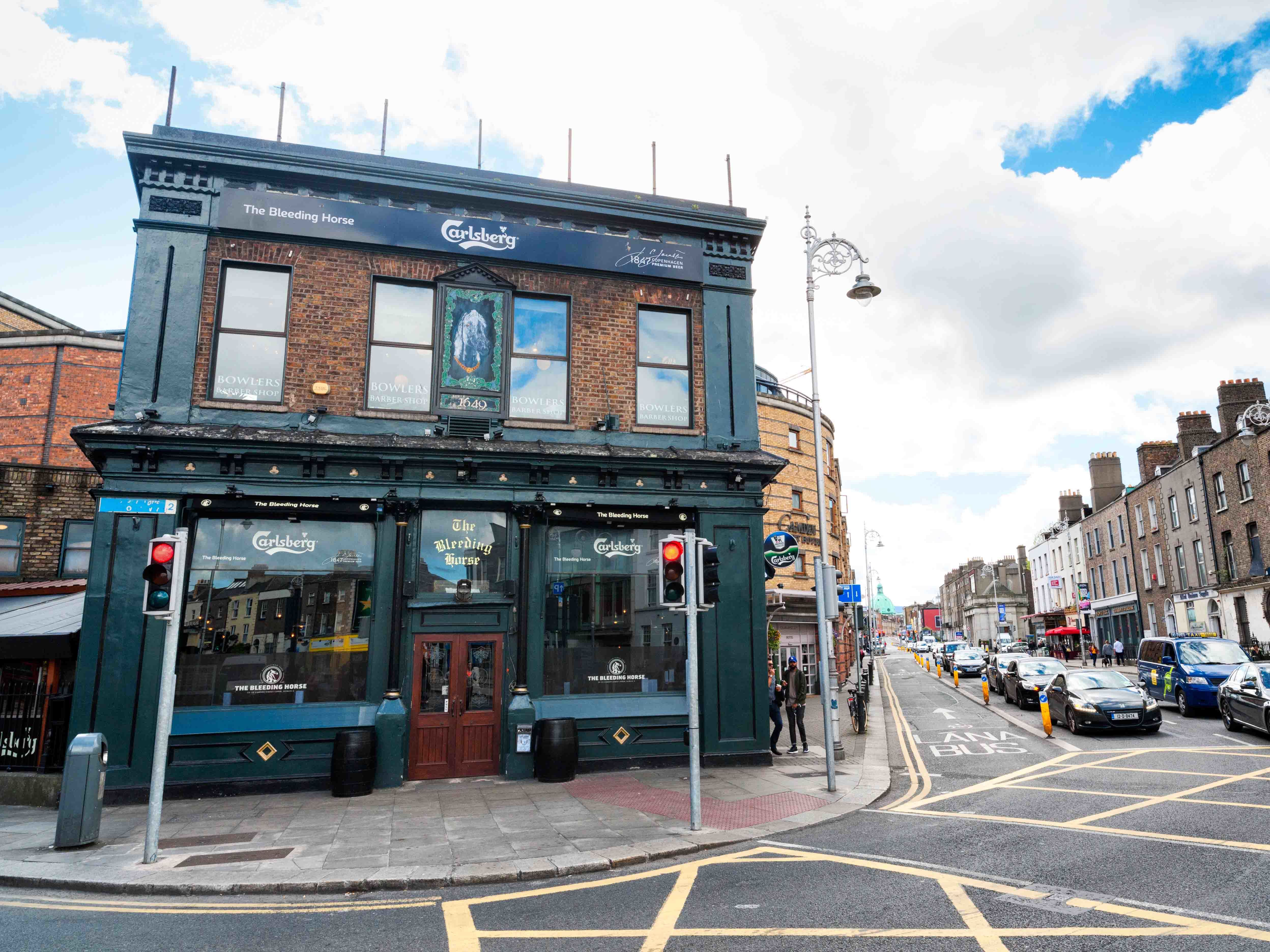
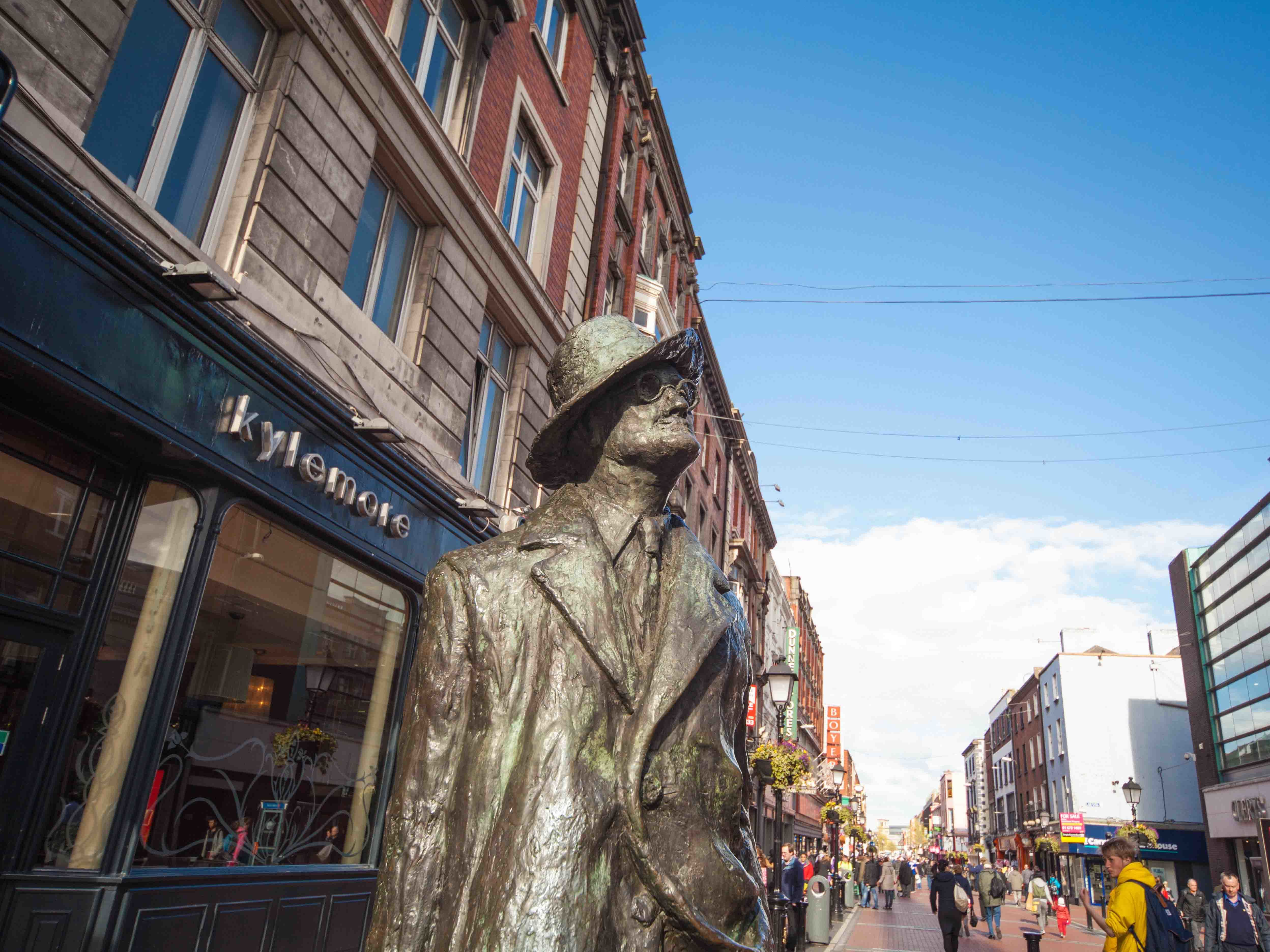
The Museum of Literature Ireland (MoLI) in Dublin is a renowned museum dedicated to literature and its creators. The museum on the edge of St Stephens Green park, home to one of several James Joyce busts in Dublin, houses an impressive collection of artefacts, documents and exhibitions celebrating Ireland’s rich literary history. One of the most important exhibitions at the MoLI is Ulysses, a Treasure Hunt, dedicated to James Joyce’s work. And of course it wouldn’t be complete without a first edition of Ulysses from 1904!
The National Library of Ireland (NLI) in Dublin is a must-visit, especially its reading room, where Stephen Dedalus in Ulysses conducts literary debates on Shakespeare, and James Joyce himself often met friends. Leopold Bloom also pays a visit to the library during his walk.
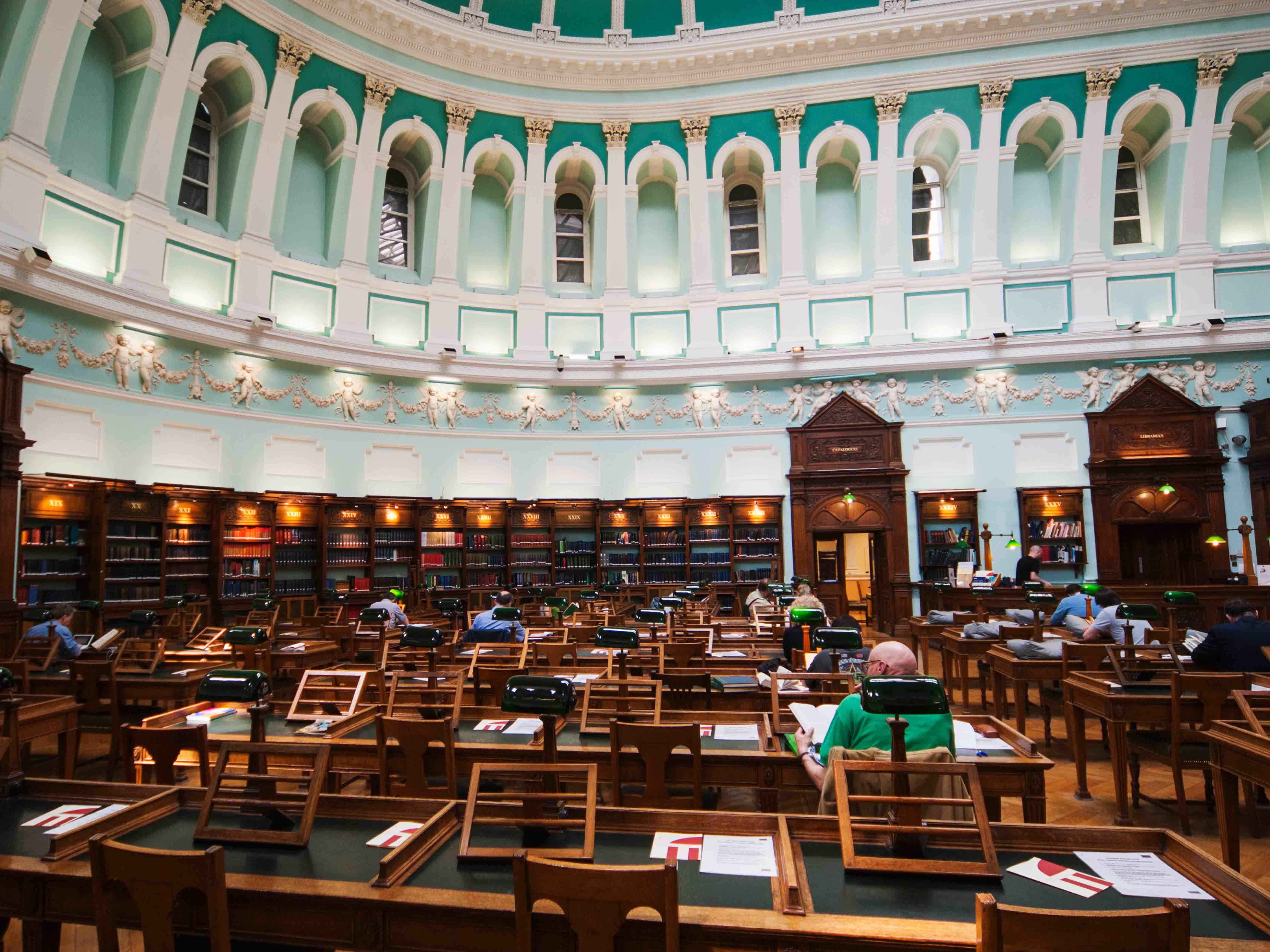
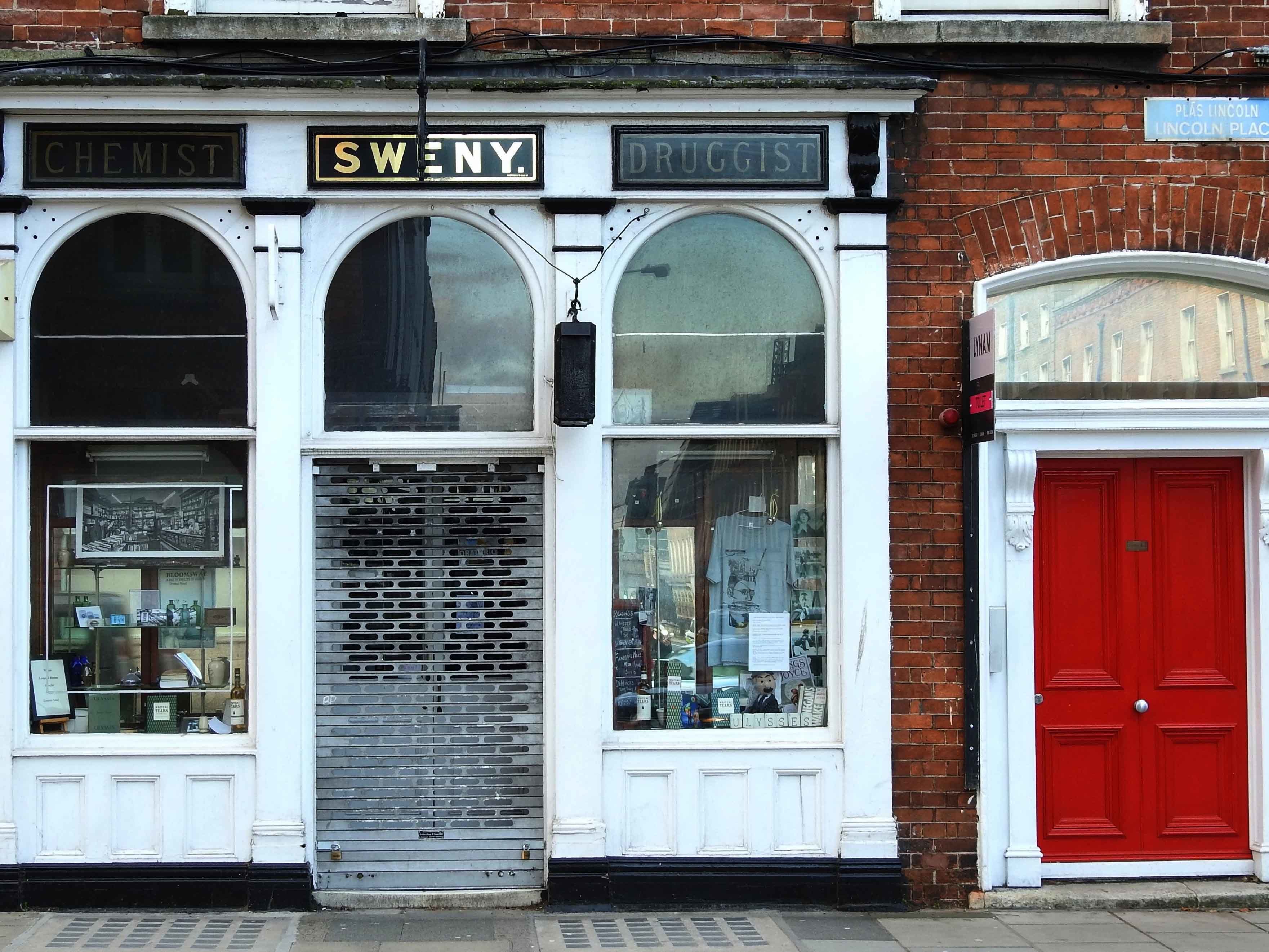
In Ulysses, Leopold Bloom enters the historic Sweny’s Pharmacy on Lincoln Place to buy a face cream for his wife Molly and a fragrant lemon soap. The pharmacy closed its doors in 2009. Today, it is a fascinating mix of an antique shop, museum and popular meeting place for passionate James Joyce fans.
Just around the corner is the venerable Trinity College – founded in 1592 and thus one of the oldest universities in the world. It is home to highlights such as the Old Library, the Book of Kells (the most famous medieval manuscript in the world), the bell tower and more. At College Park, Leopold Bloom takes a Turkish bath. Incidentally, James Joyce was barred from studying here, so he studied at the University College of Dublin and wrote several essays and plays there.
James Joyce’s novel Ulysses concludes at the Custom House on the north bank of the River Liffey in Dublin. The magnificent 18th-century classicist building, which once served as a customs house and is now home to the Department of Housing, Local Government and Heritage, is the symbolic end point of the main characters’ journey through Dublin and thus also the final destination of our walk through Dublin.
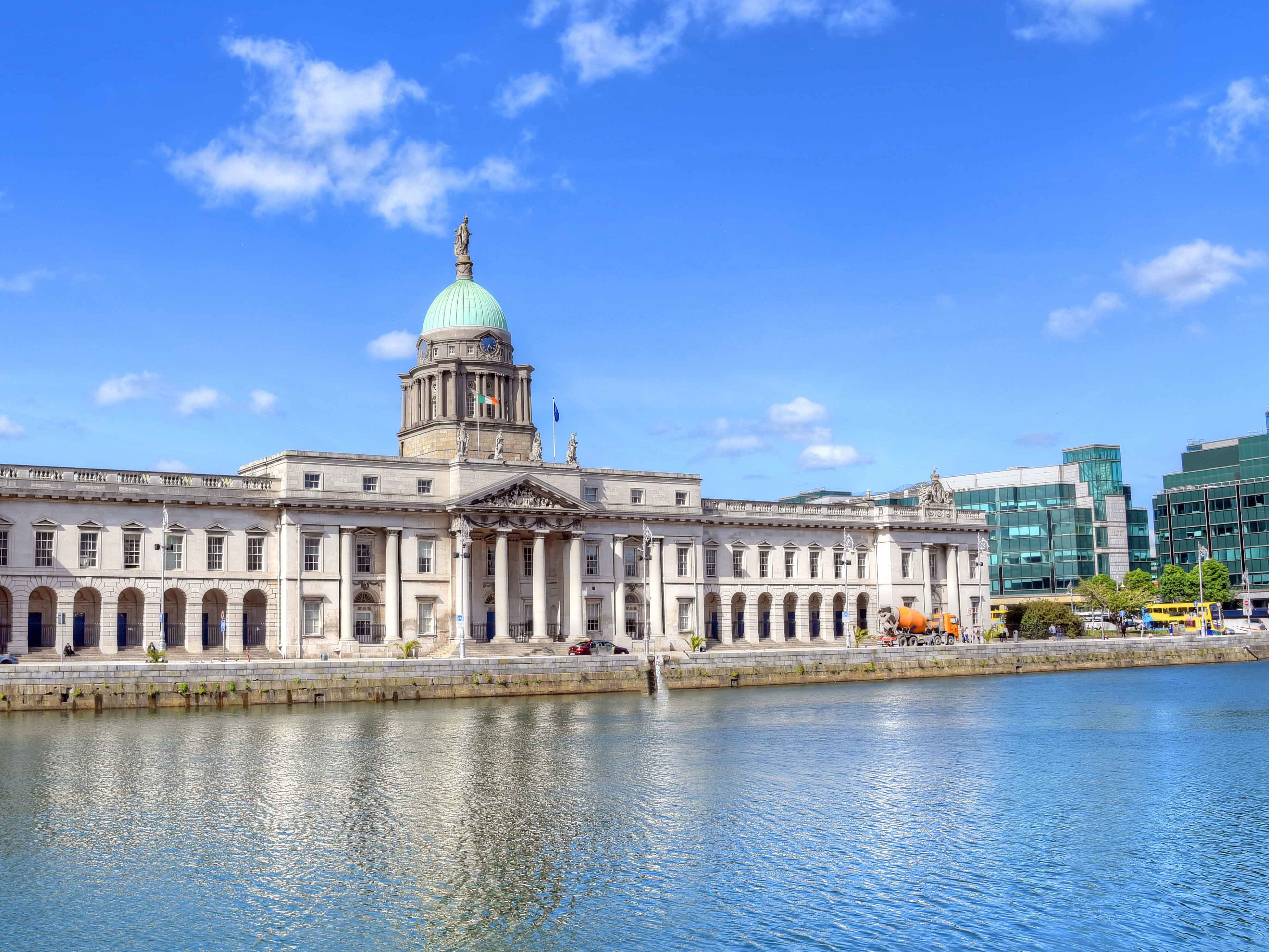
HAVE WE WHET YOUR APPETITE?
Discover more Ulysses outside of Dublin:
